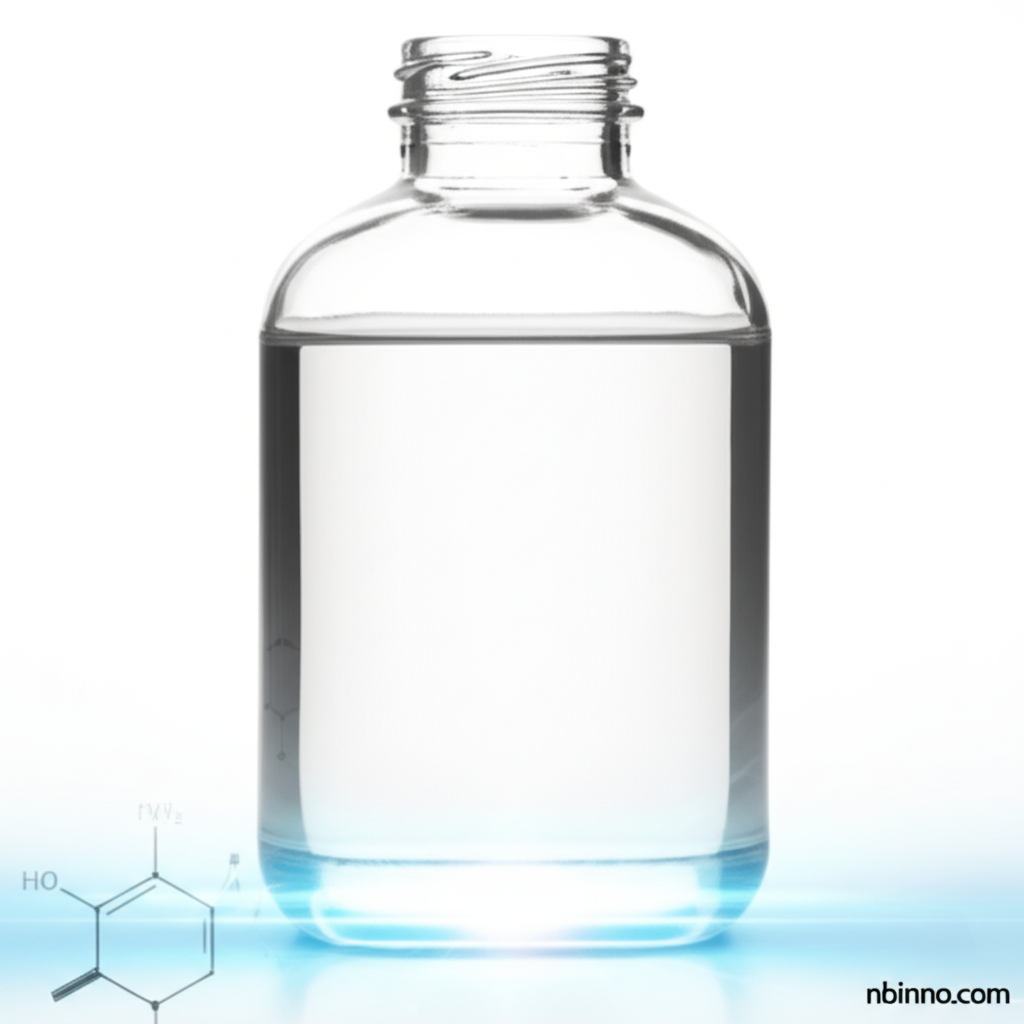Bis(2-Ethylhexyl) Adipate: Enhancing Polymer Flexibility and Performance
Discover the exceptional cold resistance and low volatility of this key plasticizer for demanding applications.
Get a Quote & SampleProduct Core Value

Bis(2-ethylhexyl) Adipate
Bis(2-ethylhexyl) adipate, also known as DOA, is a premier cold-resistant plasticizer valued for its high efficiency and low volatility. It is critical in formulating materials that require exceptional flexibility, light resistance, and durability across a wide temperature range.
- Explore the benefits of using Bis(2-ethylhexyl) adipate for excellent cold-resistant plasticizer applications in polymers.
- Learn how this DOA PVC plasticizer improves product performance in films and synthetic rubber industries.
- Understand the advantages of DEHA low volatility plasticizer for extended product life and stability.
- Discover why this plasticizer is approved for food packaging film, meeting stringent safety standards.
Key Advantages
Superior Cold Flexibility
Bis(2-ethylhexyl) adipate provides outstanding cold-resistance, ensuring materials remain flexible and functional even at very low temperatures, a key feature for outdoor or refrigerated applications.
Enhanced Durability and Stability
Benefit from the lightfastness and stability of this adipate ester, which contributes to the longevity and visual appeal of finished products across various sectors.
Versatile Application Spectrum
This high purity bis(2-ethylhexyl) adipate serves as a vital component in numerous industries, including coatings, electronics, and automotive, offering tailored solutions for plasticizer needs.
Key Applications
PVC and Polymer Modification
As a primary plasticizer, Bis(2-ethylhexyl) adipate is essential for improving the impact properties and flexibility of PVC, widely used in applications like electrical wire cladding and leatheroid.
Food Packaging Films
Its safety and performance make it suitable for clear films in food packaging, ensuring product integrity and compliance, a key benefit highlighted by its use in bis(2-ethylhexyl) adipate CAS 103-23-1 applications.
Coatings and Adhesives
Incorporated into coatings and adhesives, it enhances adhesion and reduces brittleness, making it a valuable component for construction and manufacturing sectors seeking durable solutions.
Textile and Synthetic Rubber
In the textile industry, it imparts softness and flexibility, while its compatibility with synthetic rubbers makes it ideal for applications requiring advanced material properties.
